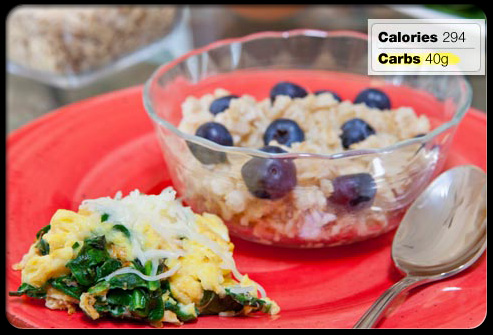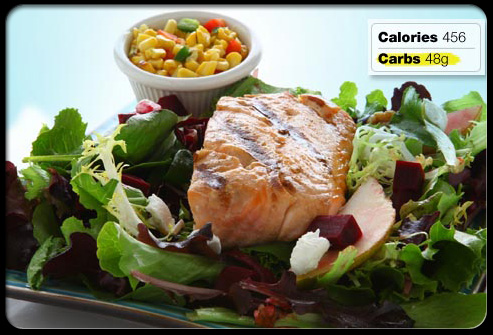Diabetes-Savvy Meals in a Glance
When you’re facing type 2 diabetes, eating a good balance of protein, carbohydrates, and healthy fats is important. Most people with diabetes have learned that what they choose to eat and drink can help raise or lower their blood sugar levels after meals. And some people find it helpful to count carbs, too. So what’s a well-balanced dinner? Which foods should you choose if you have diabetes?
There are four components in food that can affect your blood sugar:
Carbohydrates, Fiber, Protein, Fat.
Aiming for a healthy balance of carbohydrates, protein, and fat in your meals can help you manage your blood sugars. But it’s important to choose quality carbohydrates and smart fats, such as:
Vegetables, beans, whole grains, and fruit for carbs.
Fish, nuts and seeds, avocado, olives, extra virgin olive oil, and canola oil for fat.
Even so, two people with diabetes may respond differently to the same meal. You may want to check your blood sugar regularly before and after a meal and look for patterns between what you eat and drink and the blood sugar levels that result. You also may want to check the amount of carbohydrates eaten with each meal and try to keep the grams consistent with each meal. This can help you take charge of your blood sugars.
Eating a healthy, balanced diet when you have diabetes doesn’t mean you have to deprive yourself of foods that taste good. The sample menu and recipes below represent meal options that have a good balance of protein and fat and a great source of fiber. These meal options are suggestions that you can plug into your diet — in the right portion sizes — along with any additional fruit, vegetables, grains, dairy, protein, or fats in your plan. Don’t forget to pay attention to the sodium in your diet. Read labels and choose foods that are low in sodium.
Sample Daily Menu Options
Breakfast
For breakfast, here’s an example of how you might work in a high-fiber carbohydrate along with some lean protein.
The Count: 294 calories, 40 g carbs
This quick meal delivers protein in a scrambled egg and just 40 carbs, mostly from fiber-rich oatmeal and blueberries. Fiber slows digestion to help prevent blood sugar spikes. People with diabetes need to watch all types of carbs: cereal, bread, rice, pasta, starchy veggies, sweets, fruit, milk, and yogurt. Total carbs should be spread across the day.
High-fiber carb choices:
Whole grain cereals (hot or cold) with fruit
Whole grain bread, English muffin
Lean protein (low in saturated fat):
Higher omega-3 egg blended with 2 egg whites for egg dish. Add vegetables such as spinach, broccoli, or tomatoes.
Low-fat milk or soy milk for your cereal or as beverage
Part skim cheese added to your omelet
Low or nonfat yogurt with fruit or in a smoothie, or enjoy with cereal
Smart fats:
Avocado added to your omelet
Nuts for cereals and yogurt parfait
Extra virgin olive oil used in omelet
Canola oil
The Count: 445 calories, 55 g carbs
A moist, tender turkey sandwich is widely available now — on fresh, whole-grain bread, piled high with veggies. Make it a combo with fruit salad and a glass of low-fat milk for a terrific, diabetes-friendly meal. Six grams of fiber helps to control blood sugar. Milk, fruit, and veggies are all high in potassium to help lower blood pressure.
Lunch
Sandwich or wrap made with whole grain bread or tortilla and a lean protein such as:
Roasted turkey or skinless chicken or lean beef or pork
Part skim cheese or soy cheese
Water-packed tuna dressed in a vinaigrette or yogurt or light mayo
Falafels
Roasted vegetables
Bean-based lunch such as:
Bean burrito
Hummus with whole grain bread or veggie dippers
Chili with lean meat or vegetarian, or stew featuring beans
Entrée salad made with:
Dark green lettuce
Lots of vegetables
Lean meat or fish or beans or cheese plus avocado and nuts if desired
Dressing made with extra virgin olive oil or canola oil or yogurt.
The Count: 456 calories, 48 g carbs
A super meal for people with diabetes, or anyone else, begins with grilled or baked fish. A grilled corn salsa and a beet, pear, and walnut salad round out the meal. The total carbs don’t go overboard (48 grams), and there’s a good balance of other key nutrients needed in a diabetes-friendly meal: protein, fiber, and fat.
Dinner
High-fiber carb choices:
Cooked grains like brown rice, quinoa, barley, bulgur, amaranth, etc.
Whole wheat breads — tortilla, pita,etc.
Colorful vegetables on the side or with the entrée
Dark green lettuce for side or dinner salad
Fresh fruit on the side or with the entrée
Lean protein (low in saturated fat):
Grilled or baked fish, by itself or in a mixed dish such as tacos
Skinless poultry — grilled, baked or stir-fried
Lean beef or pork — sirloin, tenderloin — with no visible fat
Part skim cheese in entrees such as eggplant Parmesan, vegetarian pizza on whole wheat crust, vegetable lasagna, enchiladas, etc.
Smart fats:
Extra virgin olive oil or canola used in sensible amounts to cook the above
Nuts added to entrée or side dishes
Avocado or olives with entrée or side dishes
Sample Recipes
Homemade Napa Almond Chicken Salad Sandwich
Crock-pot Coconut Curry Chicken Casserole
Spinach & Mushroom Bagel Pizza





